Visiting Australia’s Outback – and its fascinating Red Centre – is on many people’s bucket lists. It certainly was on mine! I remember being dazzled by photos of a HUGE red rock – Ayers Rock, now called Uluru – rising dramatically out of the Central Australian desert and thinking “Wow, Someday!”
Well, that someday finally arrived in May 2016 when I enjoyed a grand 3-week tour of Australia with a group of friends. We hit many of the vast country’s highlights, including Sydney, Melbourne, Adelaide, Kangaroo Island, and the Great Barrier Reef. And, of course, we visited the Red Centre & Uluru where we spent 1.5 delightful days.
The “Red Centre” of Australia’s Northern Territory is the red desert heart of the country, consisting of Alice Springs, Uluru-Kata Tjuta National Park, and the Kings Canyon region. The Outback is the colloquial name for the vast, unpopulated and mainly arid areas that comprise Australia’s interior and remote coasts. The Red Centre truly exemplifies the Outback.
In this blog post, I will share the great sights we saw & the cool things we did in the Uluru-Ayers Rock area of the Red Centre. I hope they’ll inform and inspire you & help you in planning your own visit to this must-see part of Australia.
About Uluru/Ayers Rock
The “Rock”, one of Australia’s most iconic attractions, is located in the Uluru-Kata Tjuta National Park. Uluru is situated 440 km (273 miles) southwest of Alice Springs, the Outback & Red Centre’s main gateway town.
Formerly known as Ayers Rock, Uluru is made of sandstone about half a billion years old. Standing 348 meters high (1,142 feet) with a circumference of 9.4 km (5.8 miles), it is indeed huge! Uluru is particularly stunning around sunrise and sunset, when the golden light makes the rock’s reddish colors come alive.
Uluru-Kata Tjuta National Park is included on the UNESCO World Heritage List for its natural beauty, spectacular geological formations, and rare plants and animals. In addition, it’s been recognized for its cultural landscape – the unique relationship between the natural environment and the belief system of the Anangu, one of the oldest societies on earth.
Arrival to Uluru & Yulara Town
So, how did we get to the Australian Red Centre? We arrived by the famed Ghan train from Adelaide on the southern coast into the town of Alice Springs. (I wrote a separate blog post about that fun 26-hour train journey! Here’s the link.) There, a tour bus with local guide Darren met our group of 11 to shuttle us the 6-hour drive (with a dinner stop at the Mt. Ebenezer Road House) to Uluru & the Ayers Rock Resort in Yulara where we would spend two nights.
The township of Yulara is located outside the Uluru-Kata Tjuta National Park, about a ten-minute drive from the park’s entry station. Most of the small town is made up of Ayers Rock Resort, an Aboriginal-owned enterprise that provides a variety of accommodation, restaurants and other essential services to people visiting the park. We stayed at the lovely Sails in the Desert hotel.
Our Visit to Uluru – “The Rock”
The next morning, we were off to visit the famed “Rock” with our guide Darren. We had arrived Yulara the evening before in darkness, so we were excited to soon be getting our first glimpse of Uluru amidst the semi-arid desert landscape.
- Uluru – Kata Tjuta National Park entrance
- My First Views of Uluru – from the bus window!
Before heading to the Uluru-Kata Tjuta National Park entrance to buy our tickets, we made a stop at Yulara’s gas station to buy fly nets for our heads. Darren told us we would need them, and boy was he right!
These outback flies do not bite but they were relentless, buzzing your face. We may not have been outback fashionistas, but the head fly nets worked great. Definitely worth the $15 for 2 investment!
Kuniya Walk to Mutitjulu Waterhole
Our first stop at Uluru was to take the popular & short Kuniya Walk to the Mutitjulu Waterhole. Darren shared one of Uluru’s most important Tjukurpa creation stories – the deadly battle between Kuniya (the woma python woman) and Liru (the poisonous brown snake man). That battle took place here as evidenced by the snake form on the rock. The Anangu (the area’s Aboriginal people) believe Kuniya and her spirit are still here.
We went inside the Mutitjulu Cave – a “family cave” – to view its ancient rock paintings. For many generations, Anangu families camped here. They would tell stories around the campfire, teaching their children and painting on the rock. The Mutitjulu Cave has many examples of concentric circles, which can represent a waterhole, a campsite or a place of significance.
Uluru’s “Rock Art” sites have many layers of pictures, symbols and figures painted on top of each other. However, these days Anangu rarely create new rock art. Yet these stories are still kept and handed down to Anangu children – using them to teach the creation stories and ensure the continuation of their Aboriginal knowledge.
We then continued our walk to the Mutitjulu Waterhole, one of the few permanent water sources in the area. In fact, this is the most sacred kapi (water) around the base of Uluru. The area is particularly lush and shady – a nice respite from the hot summer desert sun.
- (above) Mutitjulu Cave entrance / Credit: Parks Australia (photo on left) Mutitjulu Waterhole / Credit: Walkatjara Art
Mala Rock / Climbing Area
Our next Uluru stop was Mala, another area of spiritual significance to the Anangu. When we visited in 2016, Mala was still open to visitors to climb Uluru. That was despite strong warnings (via signs and brochures) to the contrary – for cultural, safety, and environmental reasons.
However, after decades of controversy, Uluru was closed to climbers in October 2019. It was a decision welcomed by the area’s Aboriginal owners – and many others. Uluru is sacred ground to the Anangu, and the path of the climb is associated with important Mala ceremonies. Anangu believe that during the time when the world was being formed, the Uluru climb was the traditional route taken by Mala men when they arrived at Uluru.
And now that we were there looking up at Mala, we could easily imagine the dangers. The climb was very steep with metal ropes that started part way up the first section where you had to literally pull yourself up the rock face. Darren told us that over the years around 40 people have died making this climb – and many more have been injured.
A sign there stated the Mala climb was 3 km (1.9 miles) round trip, taking 2-3 hours and was very steep. In addition, I’ve read the route can be very slippery. Not to mention, Uluru (at 348 meters/1,142 feet) is higher than the Eiffel Tower, and as high as a 95-story building. Yikes, no thank you!
Despite strongly phrased warning signs about the dangers and an impassioned request from the Anangu to please not climb Uluru out of respect for their culture (above), there were many people still doing the climb at the time of our visit. Of course, no one in our group did – we were content to just enjoy the beautiful views.
Other Uluru Walks / Base Walk
The Uluru-Kata Tjuta National Park has a description of the different walks on its website. Most of the tracks are wheelchair accessible and range from easy to moderate. For the park’s Anangu traditional owners, Uluru and Kata Tjuta tell important stories in their unique geological formations from the beginning of time.
- Uluru Base Walk Map / Credit: Parks Australia
- Larger Uluru Map / Credit: Parks Australia
Unfortunately, I didn’t have time to do any more walks as we had other things to see. However, if I return, I would love to do the Uluru Base Walk. This 10.6 km (6.5 mile) track takes you around the whole circumference of the Rock and takes approximately 3.5 hours. (see maps above)
Uluru-Kata Tjuta National Park Aboriginal Cultural Centre
From Mala, we drove to the nearby Aboriginal Cultural Centre for a visit. They recommend allowing at least two hours to fully explore and appreciate this excellent Cultural Centre. Unfortunately, we only had an hour there due to our day’s packed schedule, but I would have loved more time!
The Cultural Centre was opened in 1995 to mark the 10th anniversary of Uluru-Kata Tjuta being handed back to its Aboriginal traditional owners. The Centre is a beautiful free-form structure built from locally made mud bricks. The buildings represent the two ancestral snakes (Kuniya & Liru) that battled at Mutitjulu Waterhole and helped create Uluru.
- Cultural Centre Picnic Area / Credit: Parks Australia
- Aboriginal Cultural Centre Map / Credit: Parks Australia
At the Centre you can learn about Anangu culture and the park’s natural environment through exhibits and free presentations with Anangu and park rangers. There are also displays, a visitor information desk, and several community-owned shops and facilities. (Note: No photography is allowed in or around the Centre – thus none of my own photos!)
In addition, there are two art galleries showcasing Anangu art and crafts – Maruku Arts and Walkatjara Art. They are Aboriginal owned and operated, with profits invested back into the local communities. Their artwork includes paintings (such as traditional dot painting) and wood carvings (punu).
- Photo Credit: Walkatjara Art
More About the Anangu / Aboriginal Communities
Archaeological evidence shows that Aboriginal people have inhabited Central Australia for more than 30,000 years. The Anangu (pronounced arn-ang-oo) are the indigenous people of the Western and Central Deserts of Australia. Mutitjulu is Uluru’s local Anangu community.
Mutitjulu’s people are the traditional owners and joint managers of the Uluru-Kata Tjuta National Park with Parks Australia. At the 2011 census, Mutitjulu had a population of 296, of which 218 (71.2%) were Aboriginal. The 3 languages spoken in Mutitjulu are Pitjantjatjara, Luritja, and Yankunytjatjara.
For the Anangu people, Uluru is inseparable from Tjukurpa, or traditional law. They believe that this land was created by the creation ancestor. In their travels, the ancestors left marks in the land and made laws for them to keep and live by. Their actions are still visible around the rock, and their stories are passed on from generation to generation, just as they have been for thousands of years.
Our guide Darren told us that the last of the Aboriginal people came out of the bush in the late 1980s, moving into aboriginal communities. If you’d like to know more about this fascinating culture, I found this 2015 article from Amnesty International entitled: Why saying ‘Aborigine’ isn’t OK: 8 facts about Indigenous people in Australia.
Our Visit to Kata Tjuta & Walka Gorge Walk
After lunch at Yulara’s Town Center square, we headed off for our afternoon excursion to Kata Tjuta, the Park’s other spectacular geological formation. Formerly called the Olgas, it was renamed Kata Tjuta, meaning “many heads” in the local Pitjantjatjara language.
Located 50 km (31 miles) by road from Uluru, Kata Tjuta consists of 36 steep-sided domes of beautiful red rock. From Yulara, it was around a half-hour drive. This is an Anangu men’s site and is sacred under Tjukurpa law. Visitors are allowed to explore Kata Tjuta but – as with all areas of the Park – the Anangu ask that we stay on the marked tracks.
We took the most popular and relatively easy Walpa Gorge walk. The trail led us through a narrow creek valley between two of Kata Tjuta’s largest domes. It took around an hour to cover the 2.6 km (1.6 miles) round-trip dirt & rock trail. The photos describe the scenery best!
Tali Wiru – Our Special Dinner Under the Stars
Uluru offers several options for dining out in the bush, enjoying sunset views of Uluru & Kata Tjuta. We signed up for the most exclusive one – Tali Wiru – limited to just 20 people. It’s not cheap but definitely a memorable once-in-a-lifetime experience!
We departed our hotel at 5:30pm in a large, tall-from-the-ground Hummer-like vehicle for the 20-minute drive through desert landscape to Tali Wiru’s private sand dune. First, we headed uphill to the fire pit where we enjoyed champagne and canapes. There we were serenaded by the haunting sounds of the didjeridoo – a long wooden flute of the Aboriginal people, perhaps the oldest musical instrument on earth.
I was really glad we had brought our head nets as the flies were particularly bad at this time. Even the didjeridoo player needed to keep swatting his head, as he played with magnificent views of Uluru behind him.
On this date of May 3rd, sunset was at 6:15pm. Soon after, we left the fire pit (after taking group photos) and made a short walk up to Tali Wiru’s open air restaurant on a wooden platform. There, we enjoyed a lovely gourmet 4-course dinner paired with Australian wines, all while enjoying views of Uluru & Kata Tjuta in the distance. There was a special menu we had pre-chosen from. In addition to the salad, I had selected kangaroo pate, the great fish and the parfait dessert.
- Kata Tjuta at Sunset
After it got dark and before dessert was served, they turned off the table lamps so we could witness the beautiful & clear night sky in total darkness. Our host Leon gave a wonderful stargazing talk, pointing out Mars, Orion, the Southern Cross and a magnificent Milky Way. As he pointed to Jupiter, a shooting star flashed across the sky! Magical…
After dinner, we walked back down to the firepit for an after-dinner drink of cognac or hot chocolate. We then enjoyed a very interesting fireside chat by Leon, who shared about his family & his Aboriginal culture. Around 9:40pm, we departed for the drive back to the hotel, basking in the glow of yet another wonderful Australian Outback experience.
- Sounds of Silence – another good dining under the stars option (less expensive) offered by Ayers Rock Resort.
Sunrise Viewing of Uluru from Talinguru Nyakunytjaku
Both Uluru and Kata Tjuta are most magical at sunrise and sunset, when changing light paints the rocks in dazzling colors. The Park has a few special viewing areas set up for enjoying great views and capturing those special sunrise & sunset photos. You can visit the Parks website page re Sunrise & Sunset viewing options.
So, on our final morning, we got up early (departing the hotel at 6:10am!) so we could experience sunrise over Uluru from the Talinguru Nyakunytjaku viewing area. We drove back into the Park. Departing our bus in the large bus parking lot, we walked in darkness along lighted paths up to the wooden deck/viewing platform to wait for sunrise.
It was cold at that early hour, so we bundled up and Darren provided us with hot water for tea & coffee. I took my first photo of Uluru at 6:46am in the early morning light and it was 7:09am when the sun first appeared on parts of Uluru.
Being an avid photographer, I mostly stayed on the platform, snapping many photos of Uluru in the emerging light, as well as of Kata Tjuta in the distance. Talinguru Nyakunytjaku also has walking paths which I visited at the end for different vantage points before returning to the bus at 7:50am. We had spent about 1 ¼ hours on site.
- Kata Tjuta – Bonus Views!
- Uluru in foreground & Kata Tjuta in the distance
Departing Uluru from Ayers Rock Airport
The hotel had provided us with a nice box breakfast for our early morning departure, so we ate on the bus as we headed from Talinguru Nyakunytjaku to the Park’s Cultural Centre for more coffee and food from their snack shop.
At 8:30am, we departed for the short drive to Ayers Rock Airport for a 30-minute Qantas Link flight to Alice Springs, where we connected to a flight to Darwin (on the northern Coast) to continue our Australian adventure.
I finally got to do some souvenir shopping at the Ayers Rock airport in a nice gift shop. I really like the colorful & cool designs of Aboriginal art, so I bought two pillowcase covers and a matching kitchen apron. And, of course, I had to buy a hand painted wooden boomerang!
“Field of Light Uluru” Exhibition
There’s one more exciting activity to share – one we did the first night upon our arrival. We had gotten tickets to a special exhibition outside in the desert entitled “Field of Light Uluru.” It was created by internationally acclaimed British artist Bruce Munro, best known for his immersive large-scale light-based installations.
“Field of Light Uluru” was huge, covering more than seven football fields. There are paths allowing you to walk through its fantasy garden of 50,000 spindles of light, the stems swaying and changing colors – including ochre, deep violet, blue and gentle white.
We learned that it took Bruce Munro and 20 people six weeks to install the exhibit with its 50,000 stems and optical fibre, all solar powered and run by 144 projectors. Bruce “wanted to create an illuminated field of stems that, like the dormant seed in a dry desert, would burst into bloom at dusk with gentle rhythms of light under a blazing blanket of stars.” What a creative visionary!
Our group toured “Field of Light Uluru” from 9-10pm, fanning out to slowly walk on our own to soak up our own special experience of the magical, colorful changing light stems as far as our eyes could see!
The exhibition had opened just a month before we visited (April 2016), with plans to remain in place for a year. However, due to popular demand, Field of Light Uluru never closed – and I’ve read that it’s been extended indefinitely. This magical light field has clearly become another spiritual part of Uluru! As you can see, it’s a not-to-be-missed experience.
Final Remarks & Resources
Even though we spent two nights in the Uluru/Yulara area, we only had 1 ¼ days of actual touring. We packed a lot in by seeing the key sights, but I would have loved another day to do the full base walk around the Rock / Uluru and to spend more time at the Cultural Centre, immersing myself more fully in the fascinating culture of the Anangu people.
There is certainly lots to see & do in the area. There are even camel rides offered by Uluru Camel Tours. Three members of my group did that one afternoon (instead of Kata Tjuta) and really enjoyed it. The tour was 1.5 hours long, with 45-minutes on the camel riding to a sand dune for views of Uluru.
Good Websites for More Info:
How to Get To Uluru: Yes, Uluru is remote but there are certainly a few options. Alice Springs is the main gateway town to the Central Australian Outback. Just like the 1987 movie, it’s primarily “Planes, Trains, and Automobiles.” It’s around a 5-hour drive from Alice Springs to Yulara/Uluru. You can also fly to the Ayers Rock airport from Alice Springs and a few other major Australian cities.
You can also take the train from Adelaide or Darwin to arrive at Alice Springs. To learn more, check out the blog post about my Ghan rail journey from Adelaide to Alice Springs entitled: Riding Australia’s Famed Ghan Train – A Journey Steeped in History.
Websites/Articles About the Outback & Red Centre
- Guide to Australia’s Red Centre and its 3 key Destinations – Alice Springs, Uluru & Kata Tjuta, and Kings Canyon
- Good Article: Where is the Outback in Australia?
More About Yulara – Uluru’s Resort Town
Yulara is located only 20 km (12.4 miles) from Uluru and 6 km from the airport. Most of the town is made up of Ayers Rock Resort, an Aboriginal-owned enterprise that provides accommodation, restaurants, and other essential services to people visiting the park. There are shops, several art galleries, conference facilities and a day spa.
The Ayers Rock Resort provides a variety of accommodation options to suit all tastes and budgets. There is the premium Sails in the Desert hotel, the modern Desert Gardens Hotel, the self-contained one and two-bedroom Emu Walk Apartments, and the funky Lost Camel Hotel. There’s also a large campground with powered and unpowered sites and cabins.
In the Resort Town Square, there are shops and cafes, a supermarket, bank and ATM, car hire, news agency, hair salon, postal office, and a Tour & Information Centre. The resort offers a wide range of tours and activities for guests who don’t have their own transport.
Yulara is also home to the National Indigenous Training Academy, which provides employment and training opportunities for Aboriginal and Torres Strait Islander people. The workforce at Ayers Rock Resort is now more than 40% Indigenous employees. Ayers Rock Resort is operated by Voyages Indigenous Tourism Australia.
- Want to read more of my Blog Posts About Australia? Click this Link.
Good Book to Recommend About Australia:
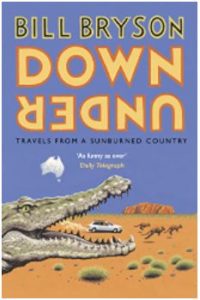
Bill Bryson follows his Appalachian amble, A Walk in the Woods, with the story of his exploits in Australia, where A-bombs go off unnoticed, prime ministers disappear into the surf, and cheery citizens coexist with the world’s deadliest creatures: toxic caterpillars, aggressive seashells, crocodiles, sharks, snakes, and the deadliest of them all, the dreaded box jellyfish. And that’s just the beginning, as Bryson treks through sunbaked deserts and up endless coastlines, crisscrossing the “under-discovered” Down Under in search of all things interesting.
COMMENTS: Have you already visited the Australian Outback and Uluru? What was your impression & favorite things you did? If not yet visited, is this on your bucket list?









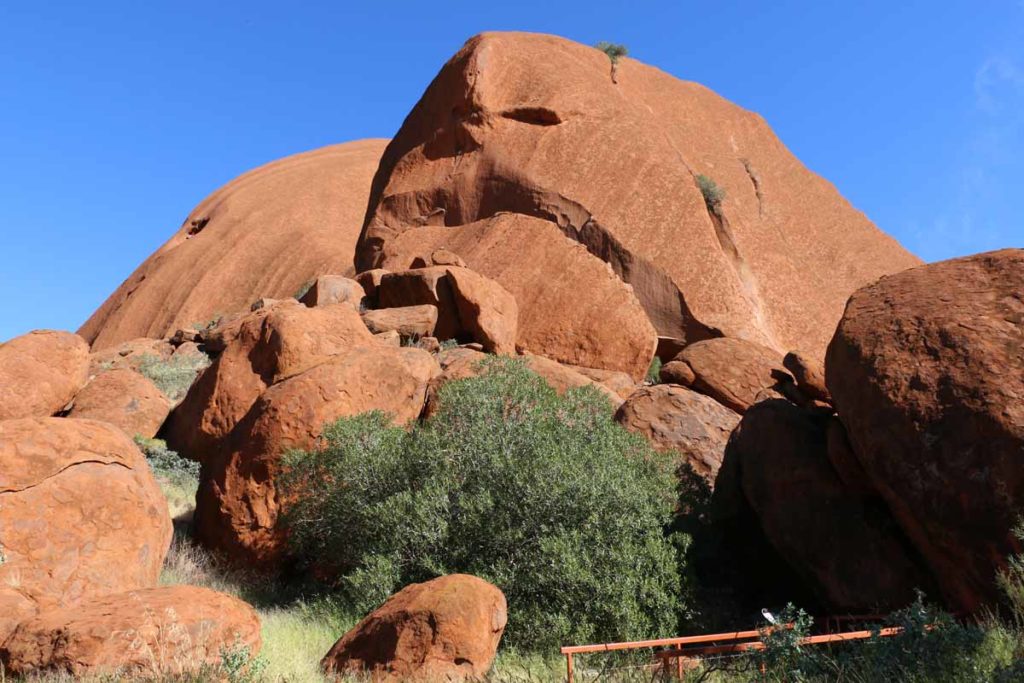


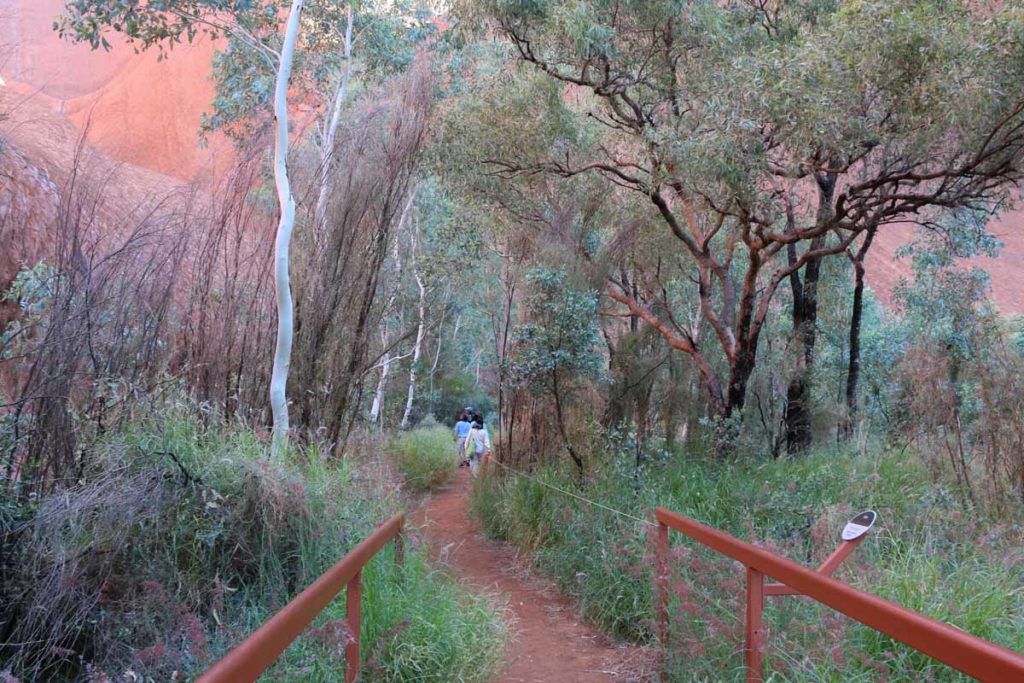
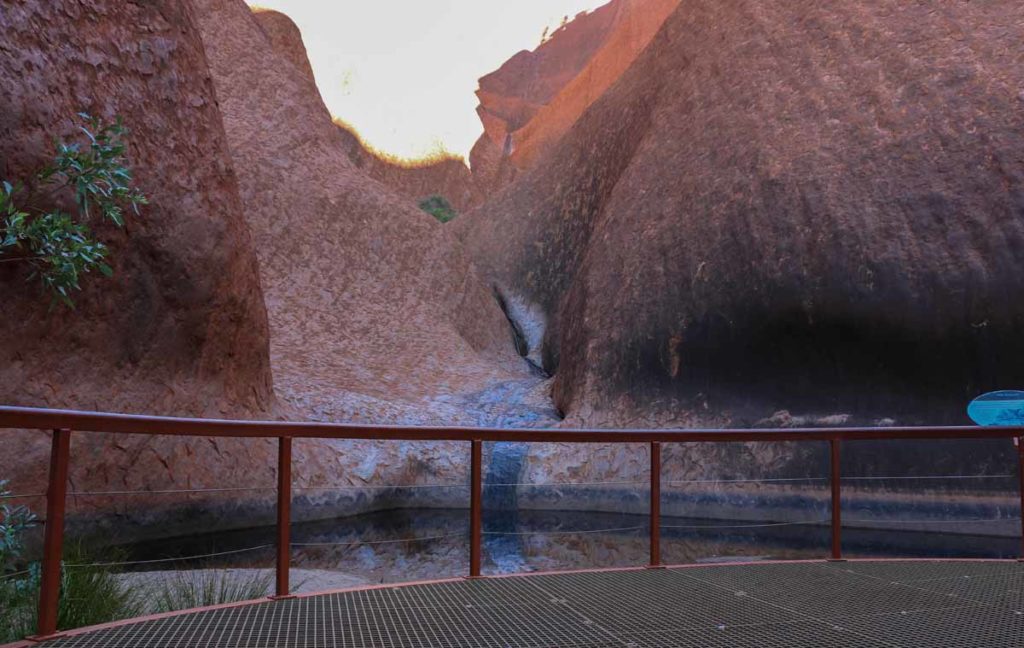







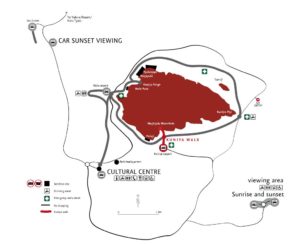








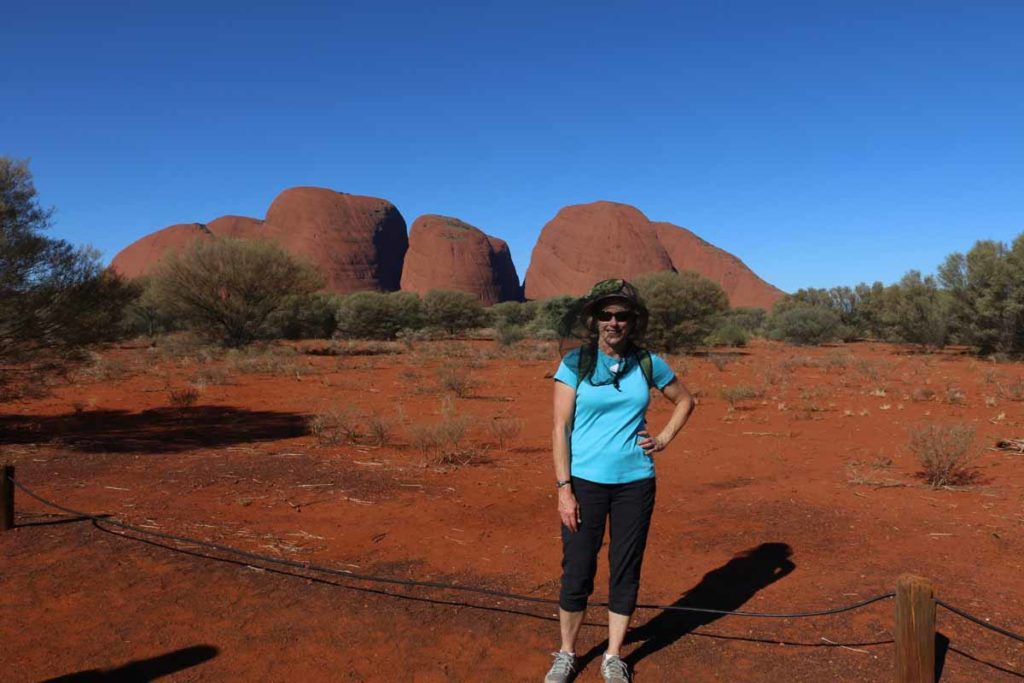
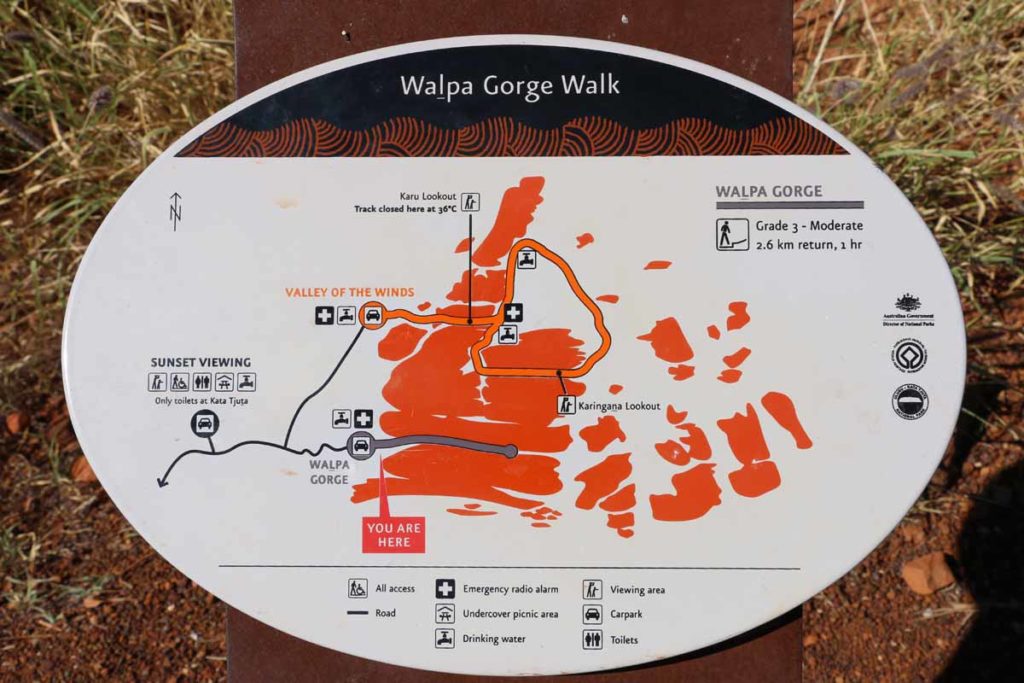
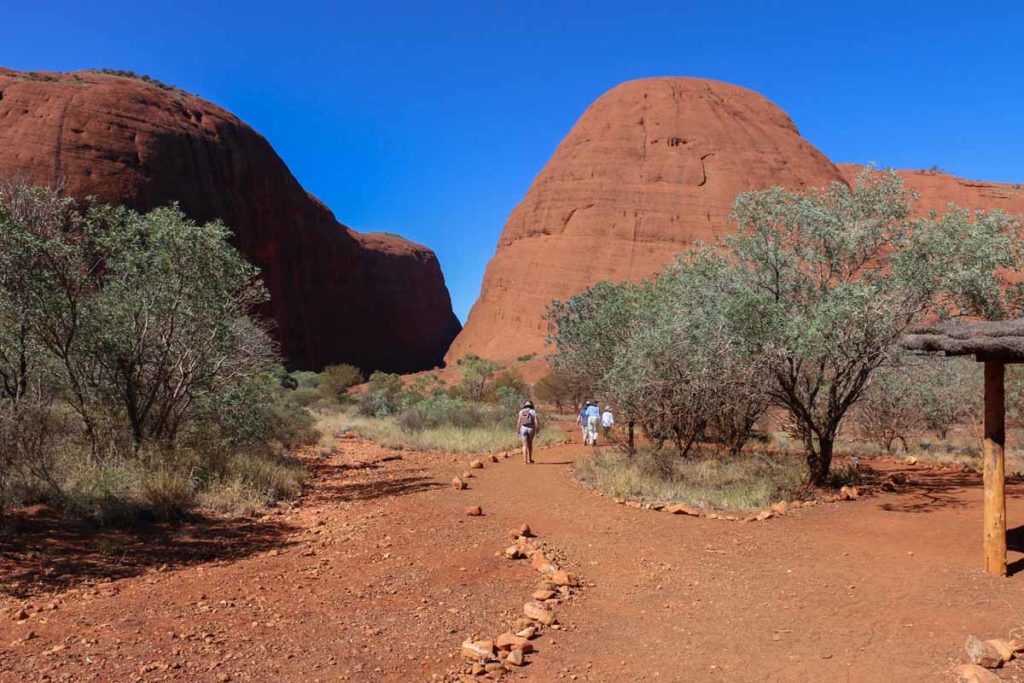
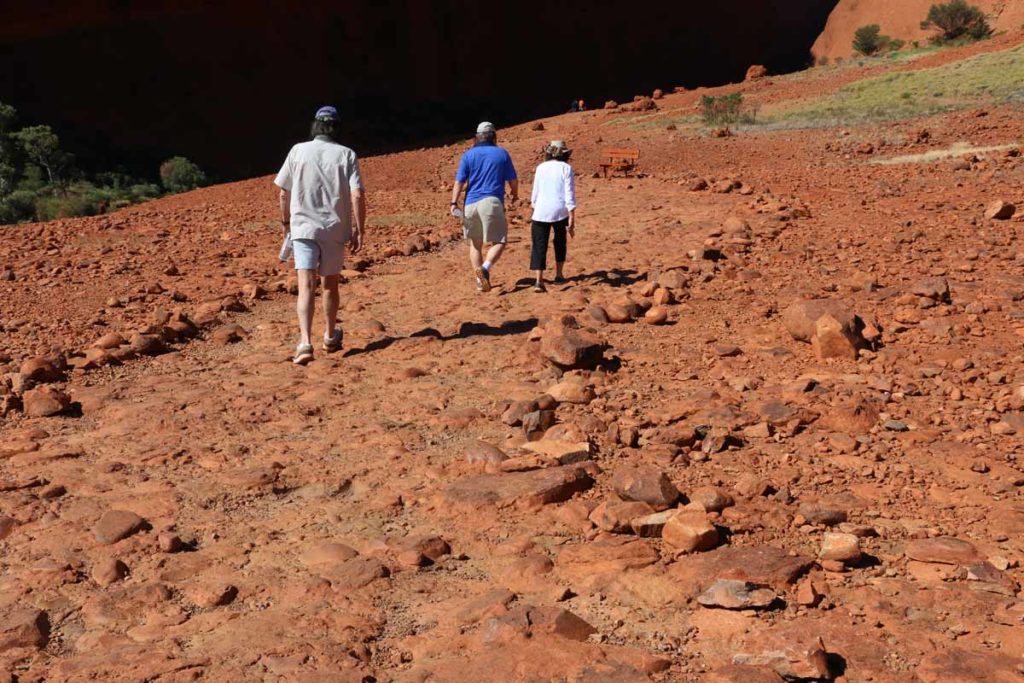


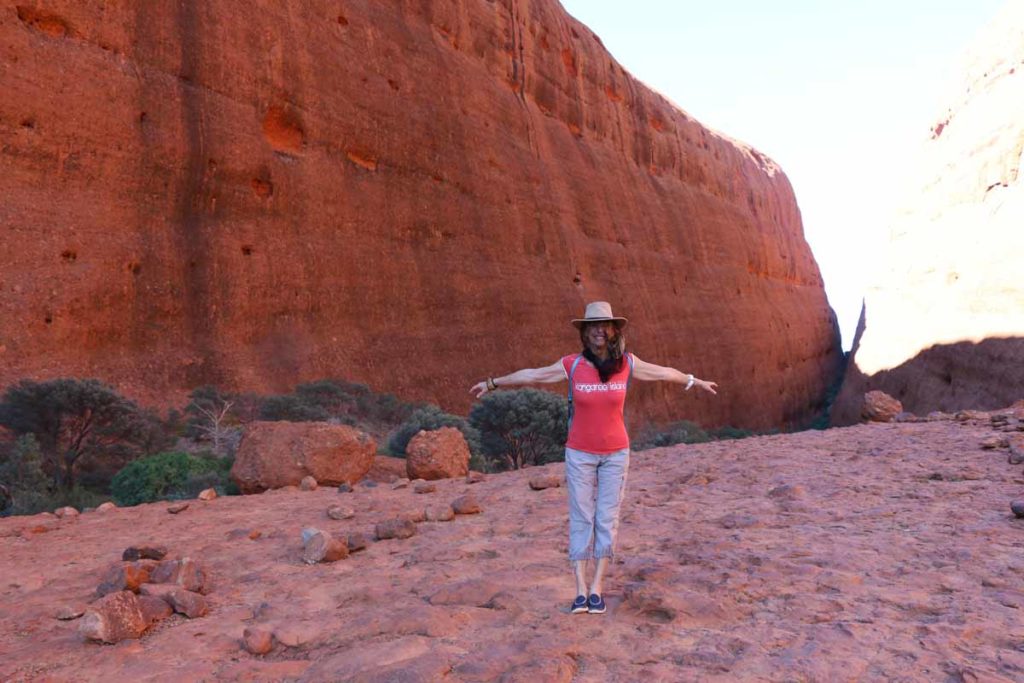

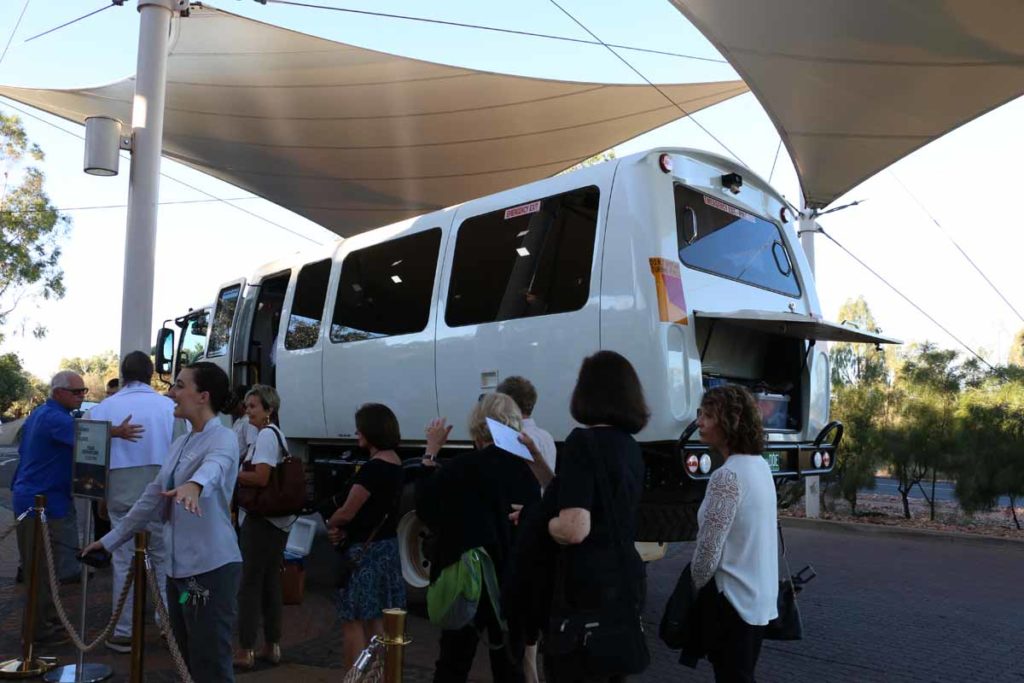


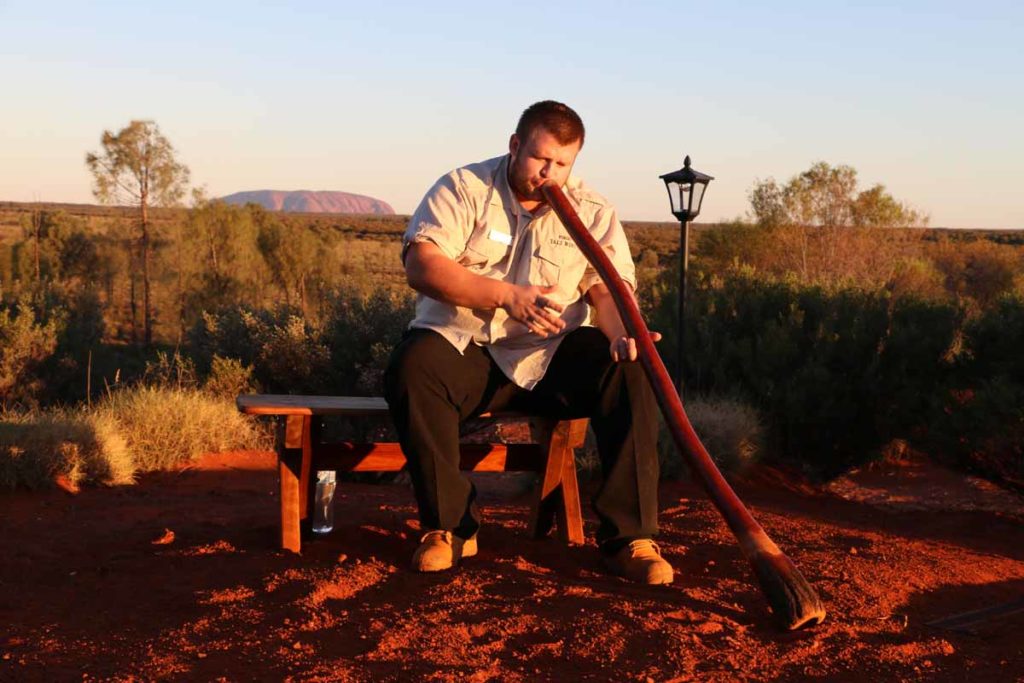
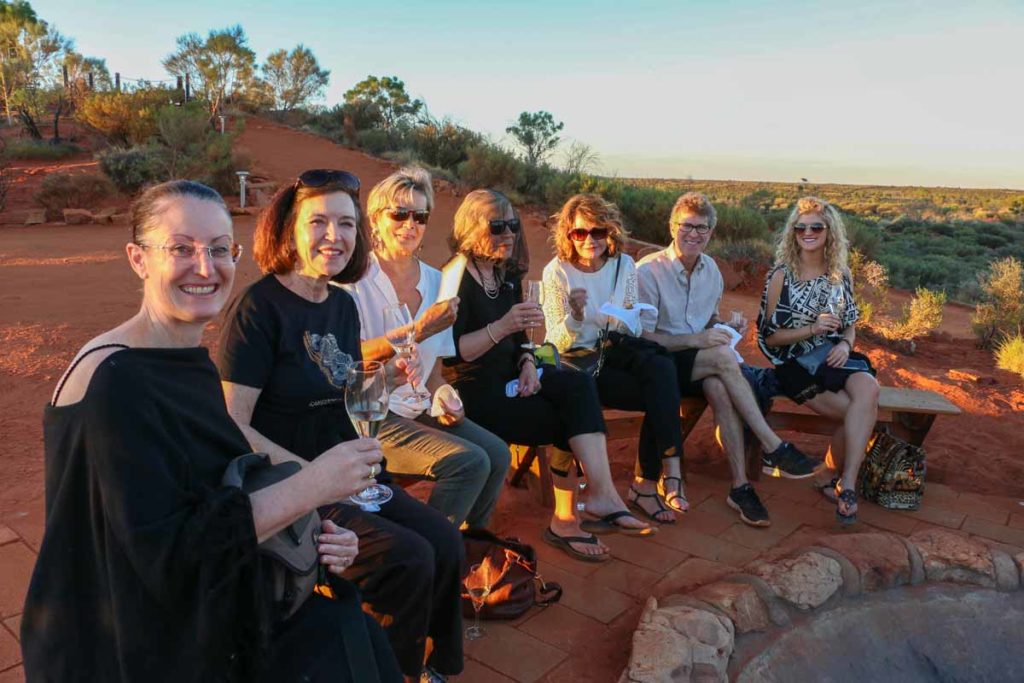
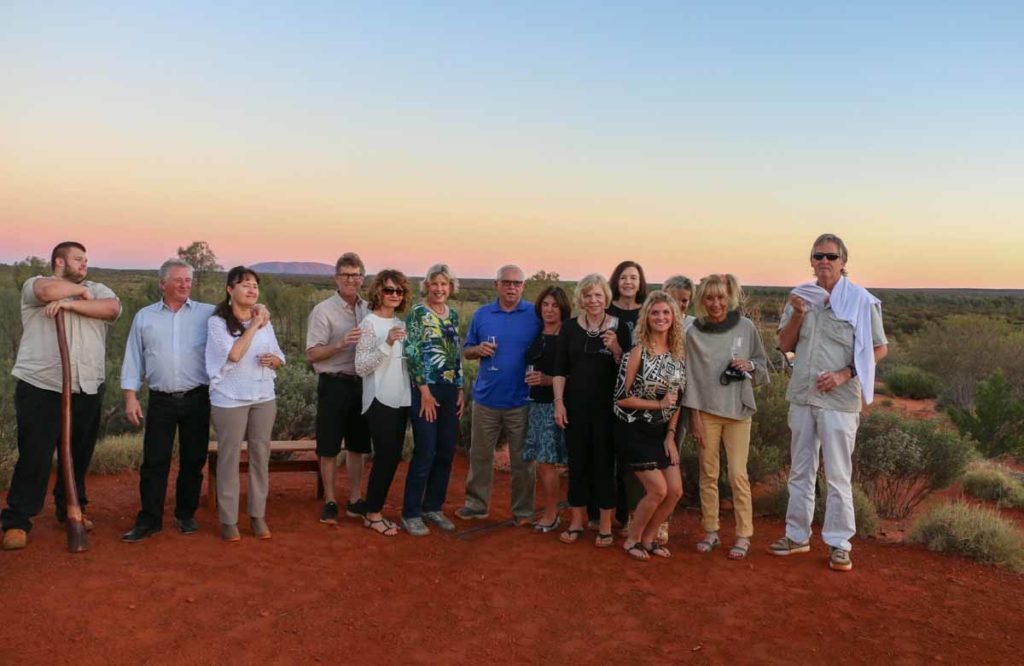


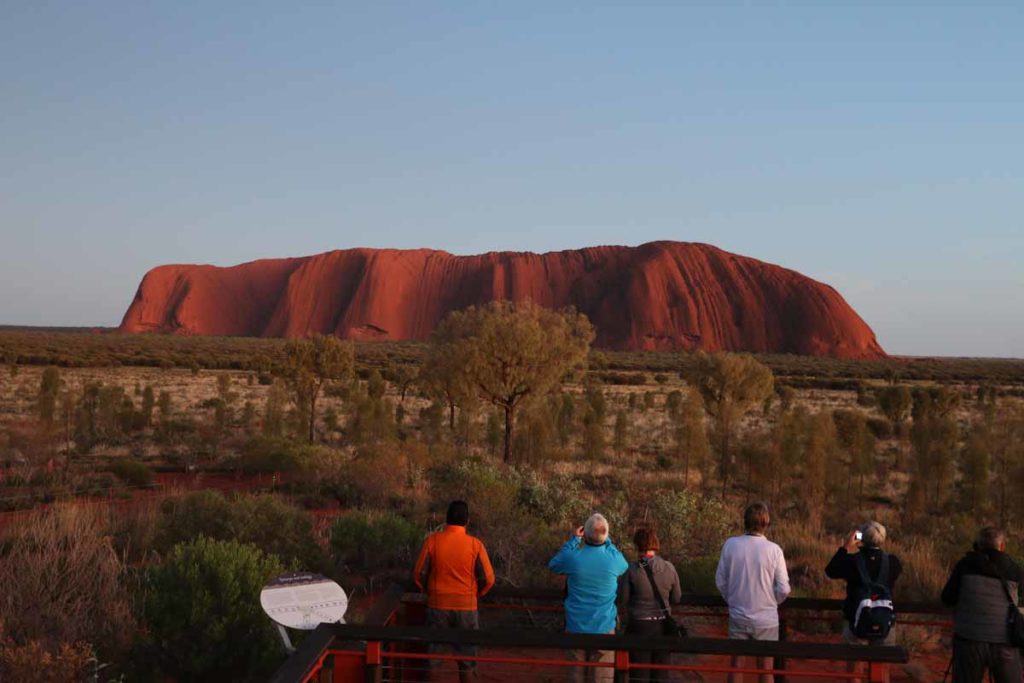


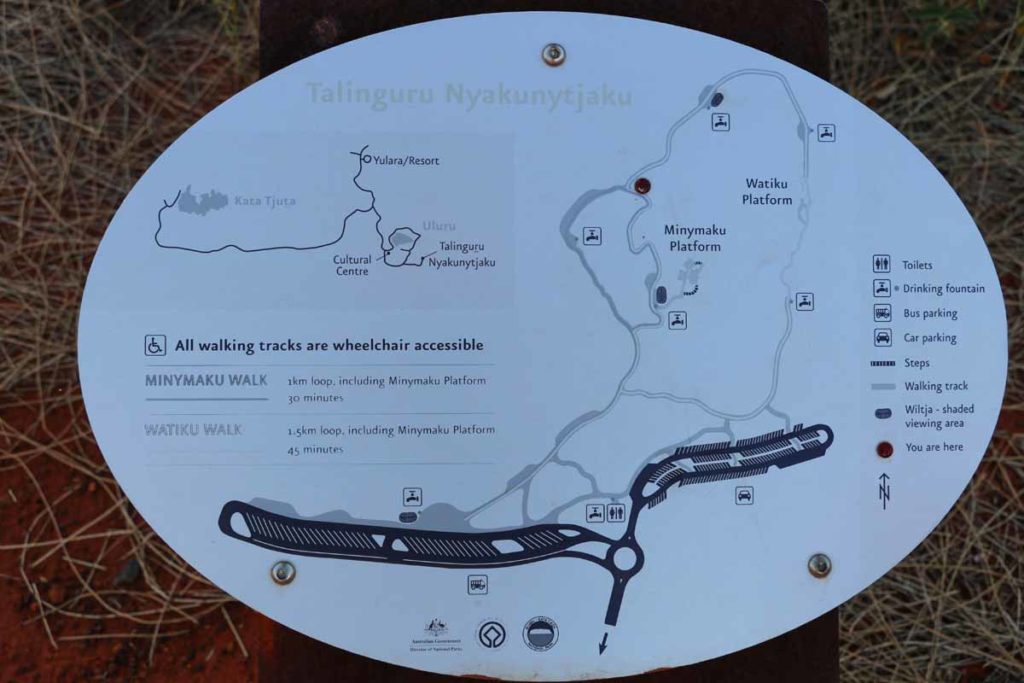

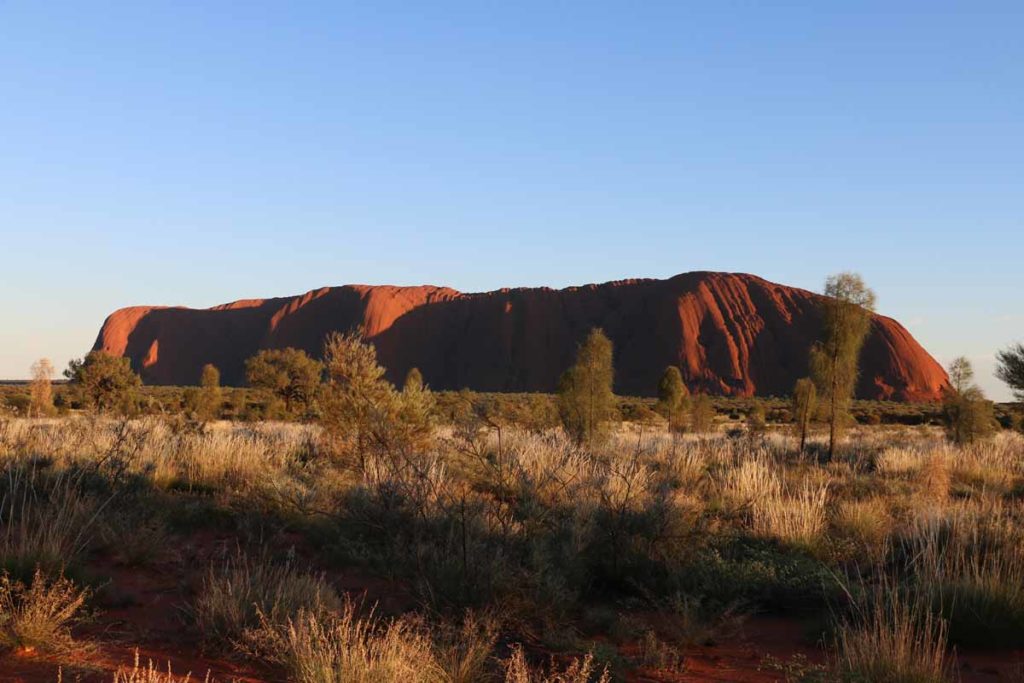



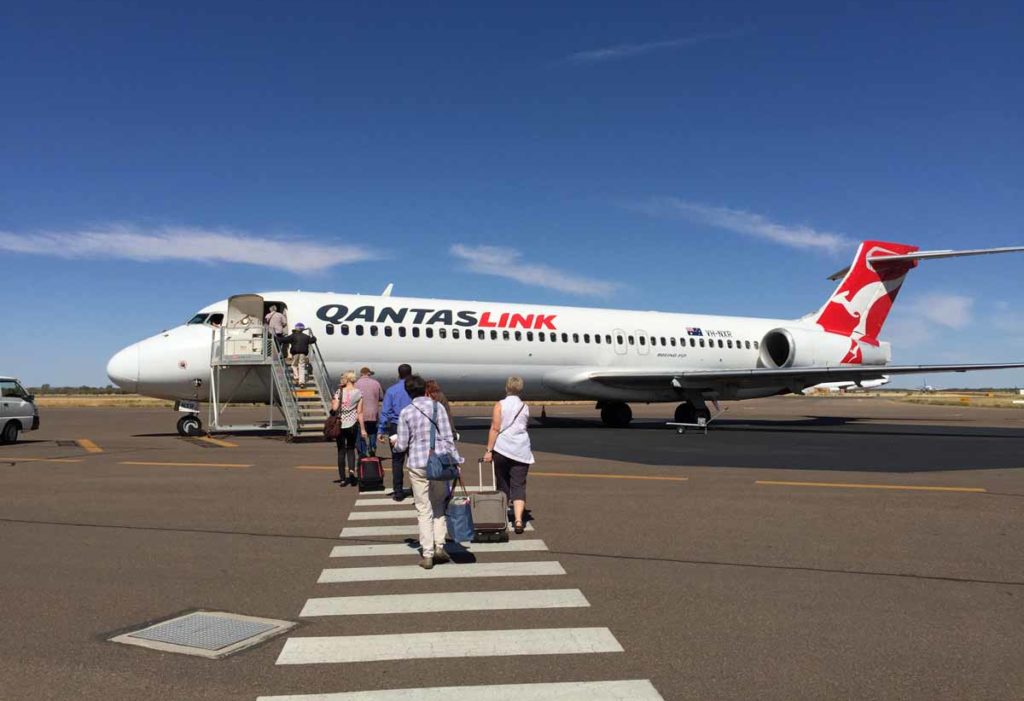











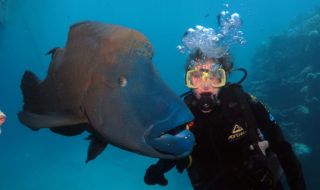
Post a Comment